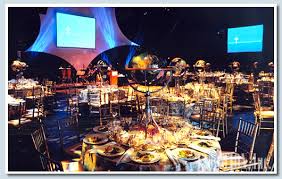 The Journalistics blog ran a great piece today about how to use social media to market an event. Let's expand on that topic here and review how to use traditional media to market an event. Most situations benefit from a combination of both. Include as many of these elements or tasks into your planning as possible:
The Journalistics blog ran a great piece today about how to use social media to market an event. Let's expand on that topic here and review how to use traditional media to market an event. Most situations benefit from a combination of both. Include as many of these elements or tasks into your planning as possible: - Create a plan with a timetable. Events have lots of moving parts and if you don't have a large staff, you'll be distracted by the logistics and forget about publicity components if you don't have it all on paper with a calendar that reminds you when to do what.
- Incorporate newsworthy elements. Maybe it's the "first" or "world's largest" whatever, a local media personality as your emcee, or a celebrity speaker.
- Uncover and use all of your pre-event publicity angles. Those elements above are key here -- who cares if you've got newsworthy angles if you aren't using them to get media coverage? I was once responsible for planning and publicizing the first beach snowshoe race, a charity fundraiser sponsored by a beverage alchohol brand. It was covered by national TV media only because I alerted them.
- Make a pitch for on-site media coverage. It's too late to generate attendance at this point, but the exposure is good for your image, product, cause, or service.
- Look for ways to get publicity after the event, too. Hire a professional photographer to take candid photos you can send to weekly newspapers and add to your newsletter and Web site. Was it a fundraiser? Send a news release announcing how much money was raised and how it will be used. Did the event break records? Share that information with the press.
You can't afford to overlook either social or traditional media when promoting your event, so make sure your plan incorporates as many tools and tactics from both as possible.




1 comment:
Short, precised and really really useful. All points explained well.
Post a Comment